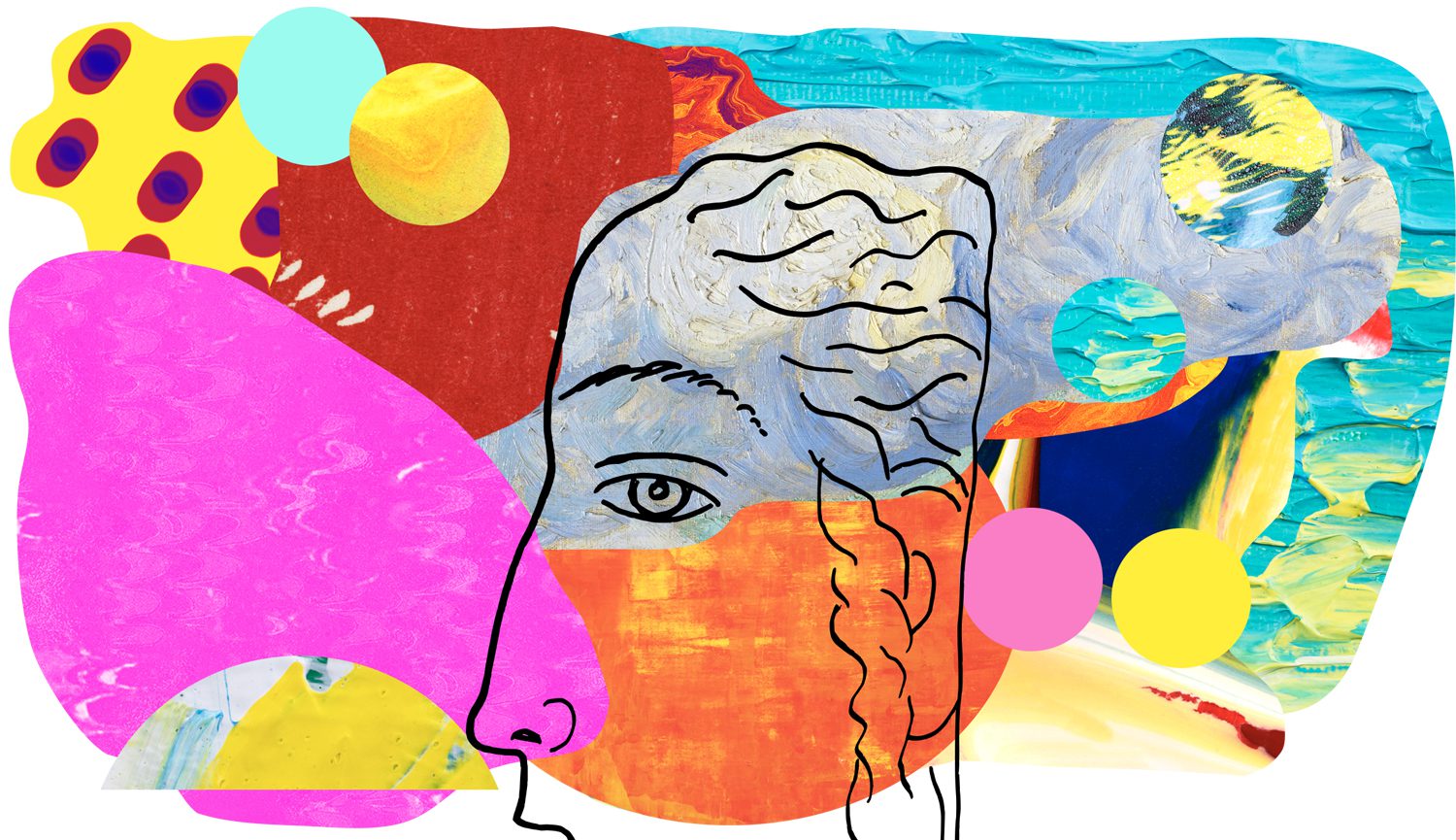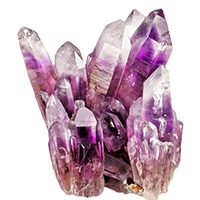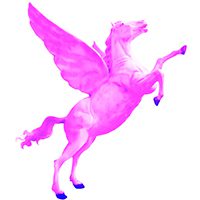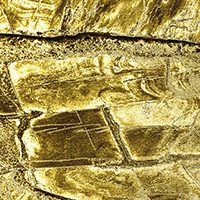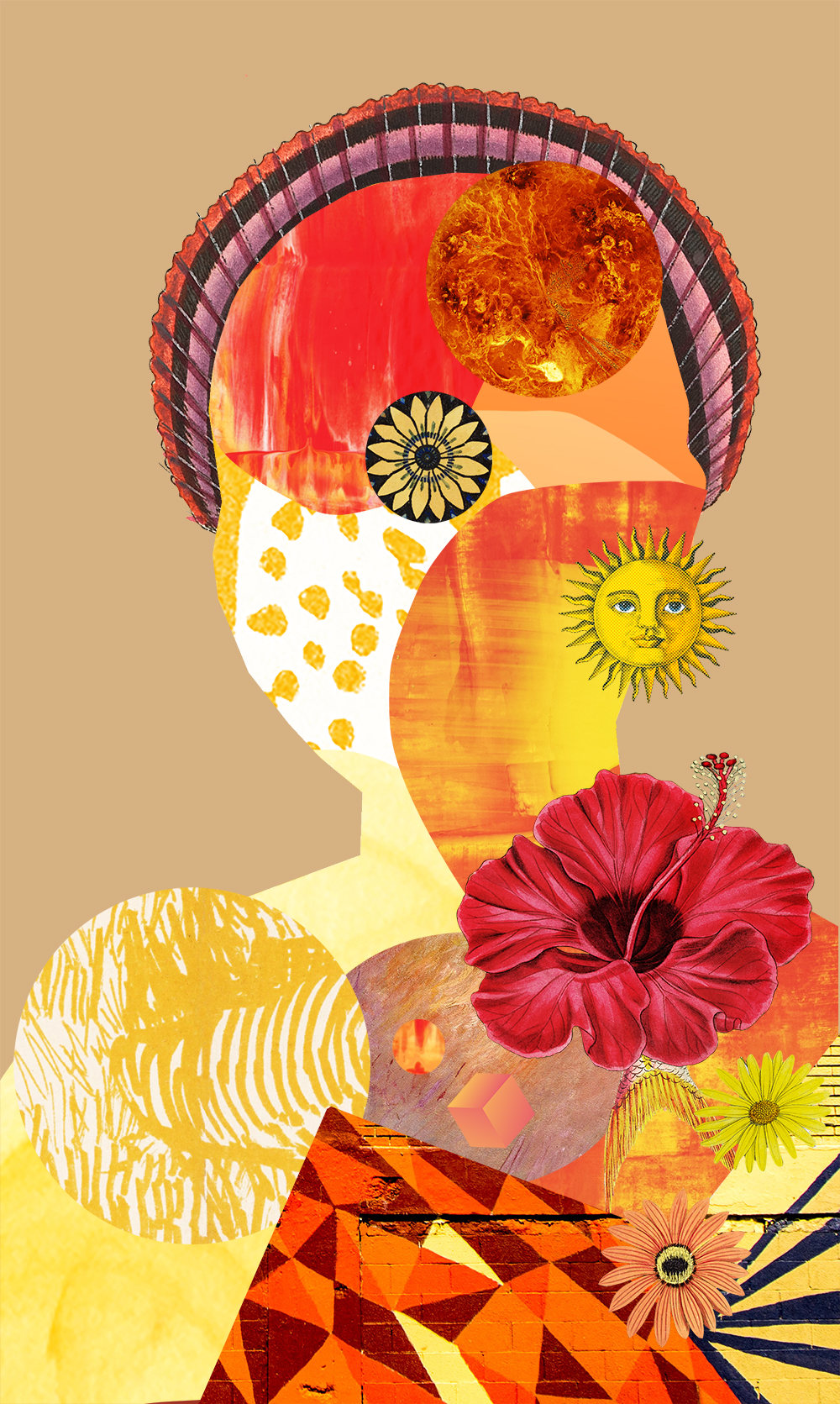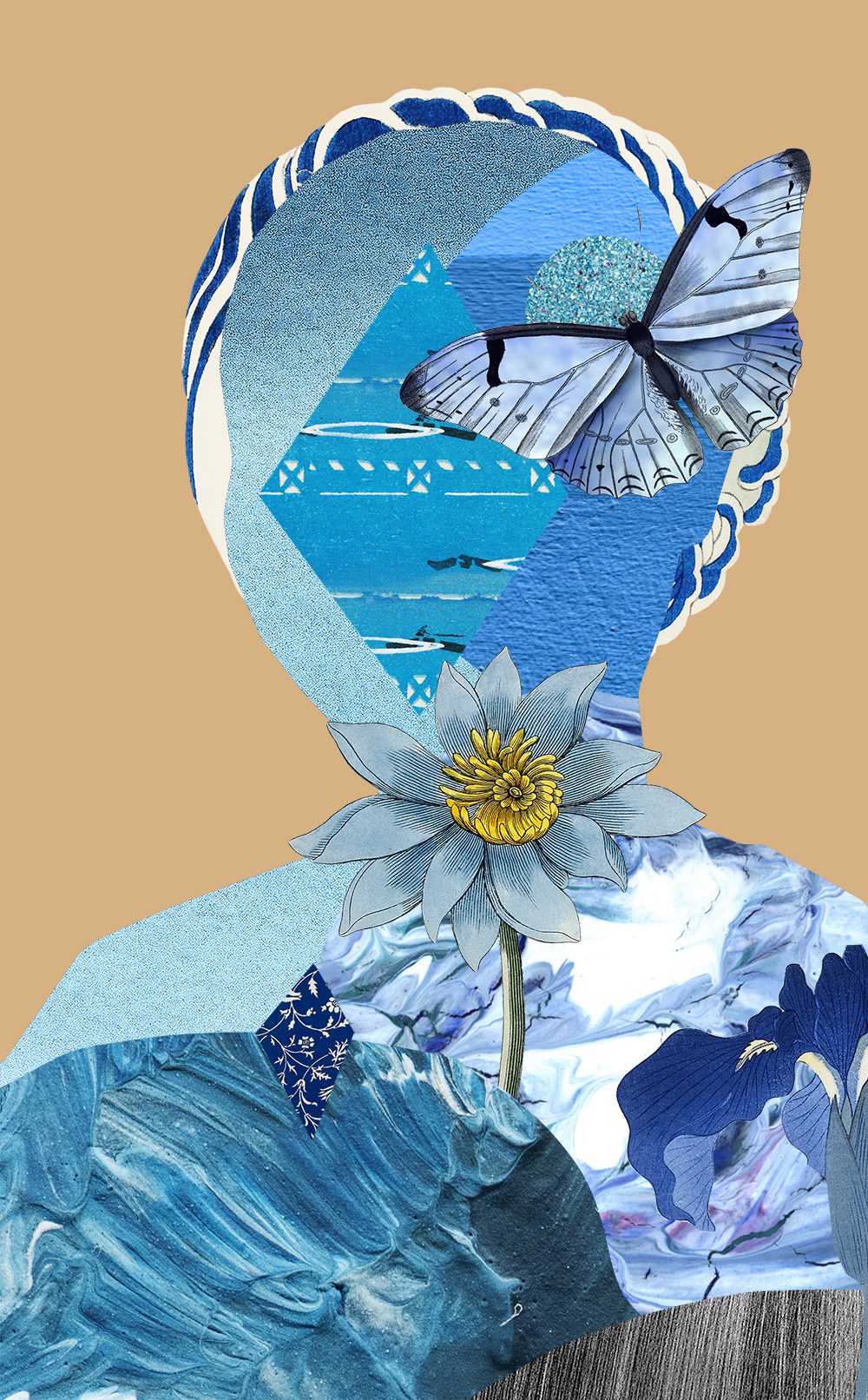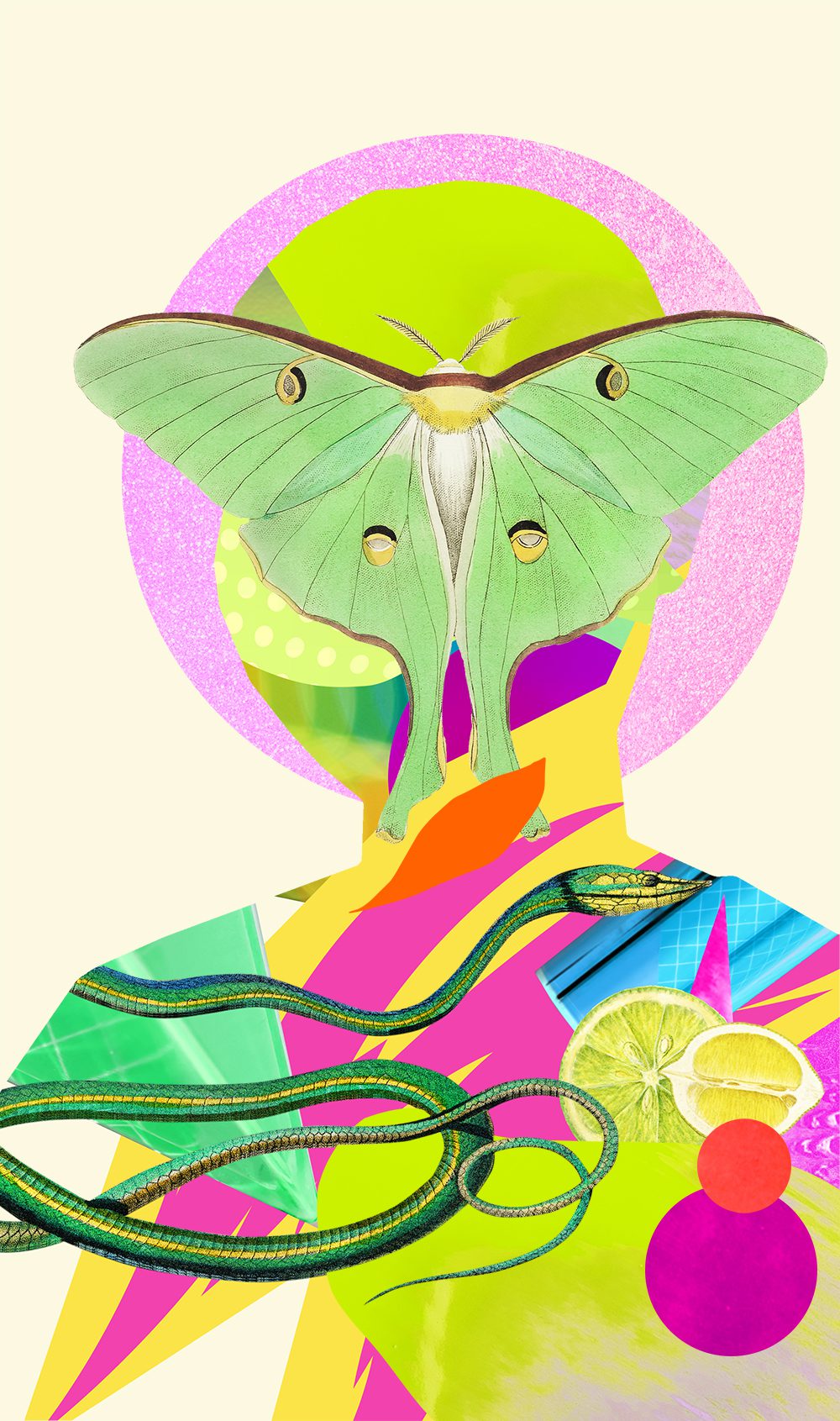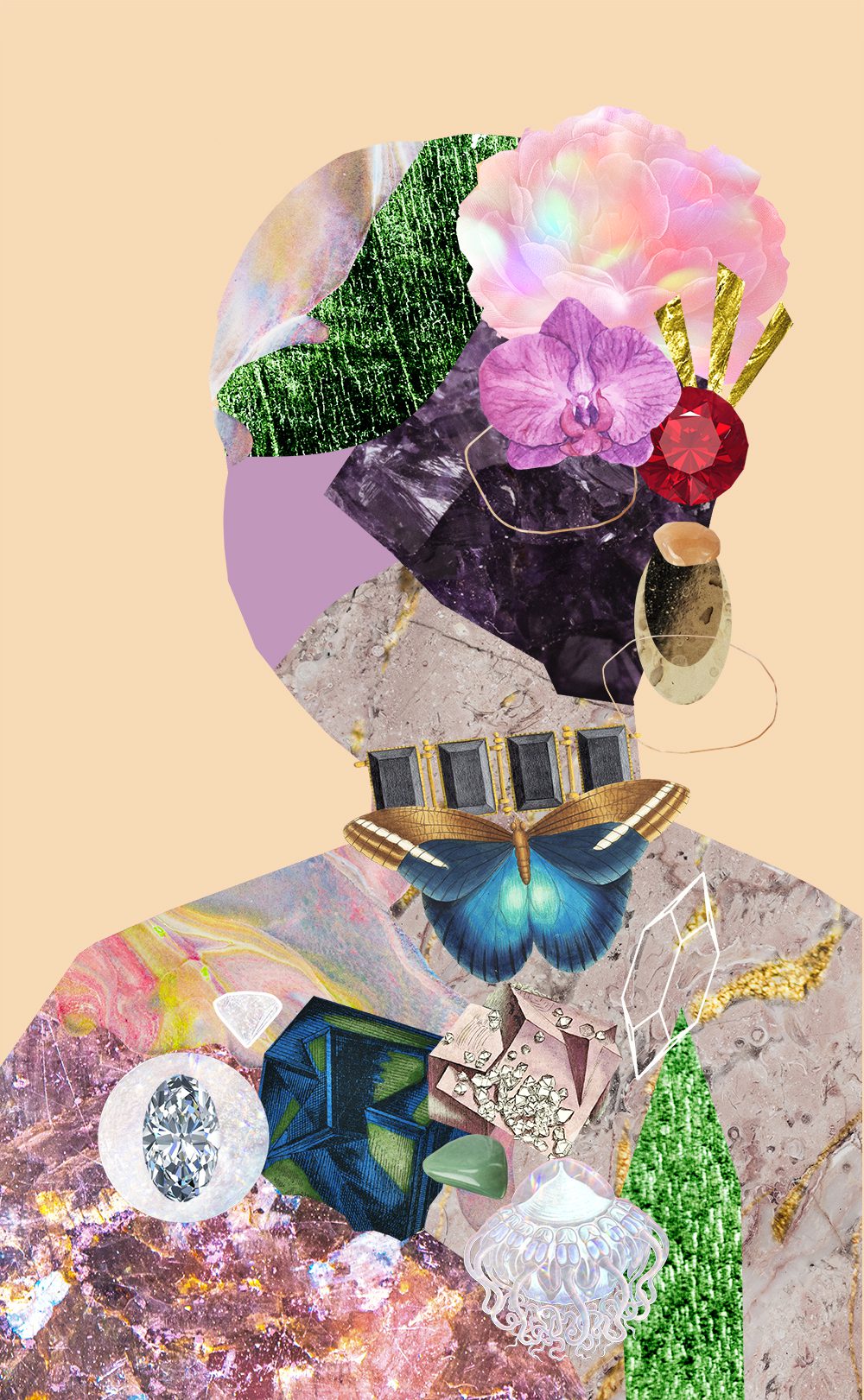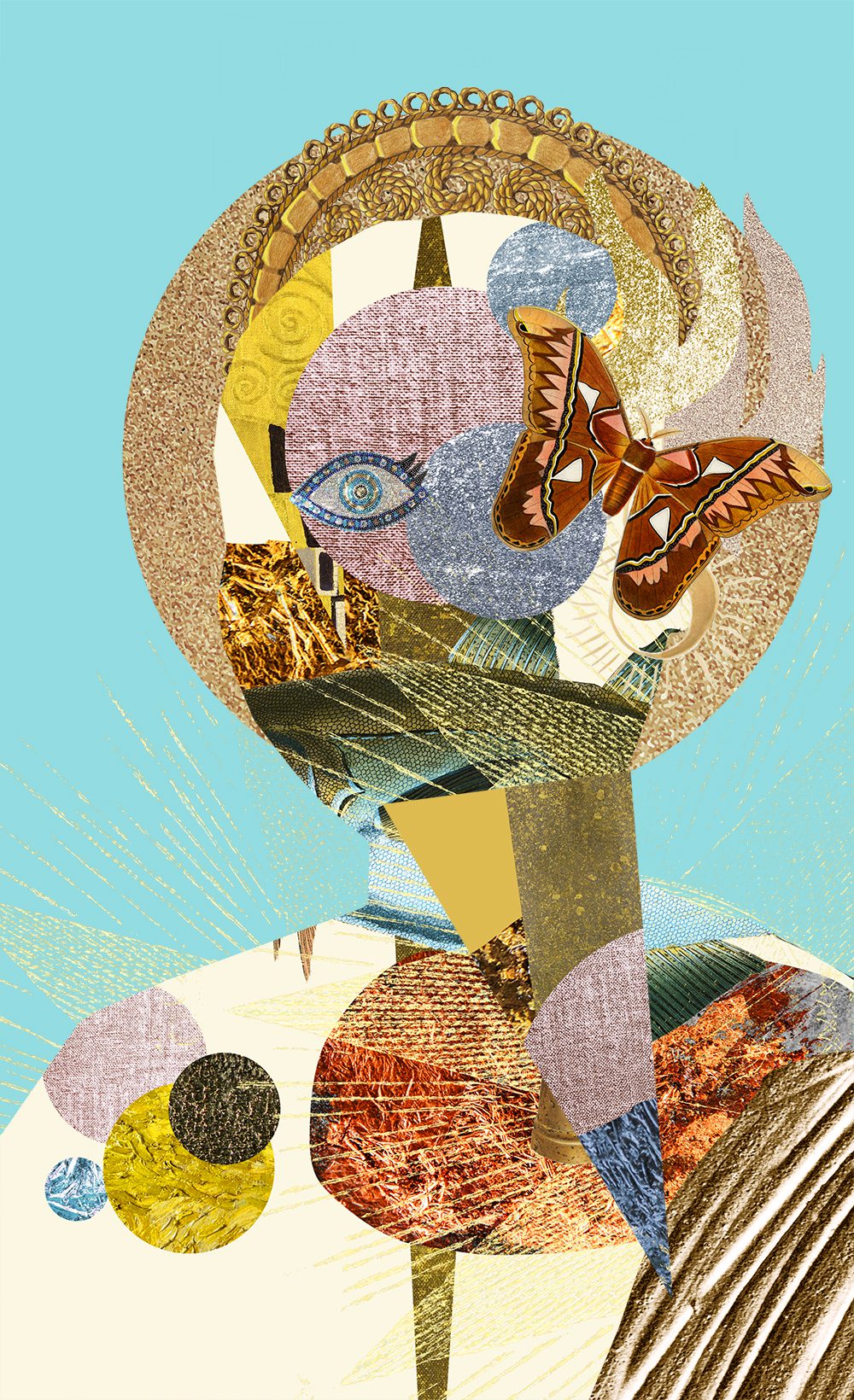
Western Art History – Ancient Roman Art
This series aims to break down and present western art history into bite-sized chunks with the hope to develop a stronger visual literacy and a bucketload of inspiration.
Let’s consider the idea that no artwork lives in a void and that knowing what came before can lead to innovation by adding upon or breaking away and in the process allow us to pay our respects to those paths forged before us.
Wiki is my friend for this series and the roadmap for the series is via this linear progression.
Today we’re exploring ancient Roman art – you can track back the rest of the series here!
ANCIENT ROMAN ART
Centered in the city of Rome, the civilisation of Ancient Rome ruled much of Europe for over 1000 years. The arts flourished during this time and were often used by the wealthy and powerful to memorialise their deeds and heritage. The huge demand for art in Rome, especially among the Roman elite, means the sheer volume of Roman art dwarfs any previous civilisation.
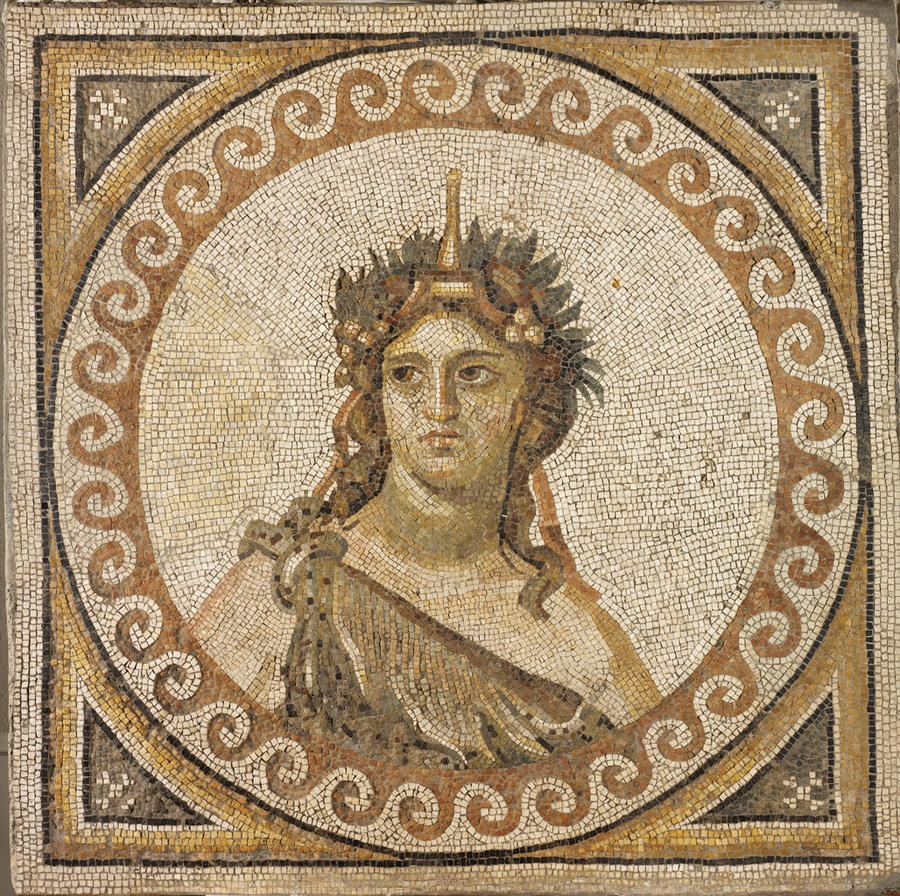
Floor mosaic fragment depicting Bacchus, 325-330 CE (source)
To get a grasp on ancient Roman Art, this entry will be broken down into when, what, who, how, and why.
Republic 509 BCE – 27 BCE
Early Empire 27BCE – 96CE
High Empire 96CE – 192 CE
Late Empire 192CE to 337 CE
(source)
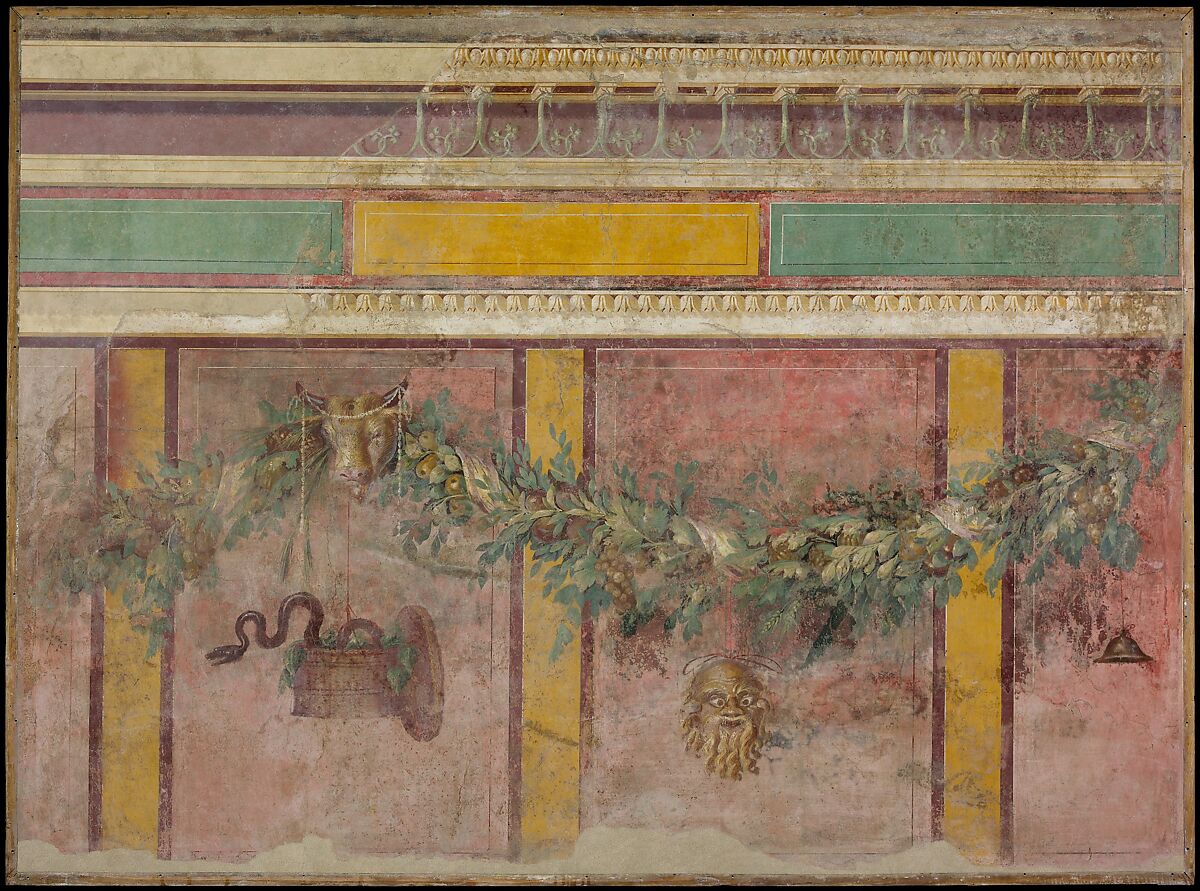
Wall painting from the west wall of Room L of the Villa of P. Fannius Synistor at Boscoreale (source)
WHAT
PAINTING
Ancient literary references Roman paintings on wood, ivory, and other materials. Roman interiors were lavishly painted and stuccoed with the majority of Roman frescoes found in Campania, around the Bay of Naples, preserved after Mount Vesuvius erupted on August 24, 79 A.D. (source 1/2)
Roman painting themes included: animals, still life, portraits, scenes from everyday life, and mythological subjects. In Pompeii wall paintings were discovered with subject matters related to the purpose of the building; sex scenes painted within brothels and food subject matter in restaurants.
The main innovation of Roman painting compared to Greek art was the development of landscapes. Landscape paintings could depict pure scenes of nature (particularly gardens with flowers and trees), episodes from mythology, and architecture. Genre scenes generally depicted Romans, or Gods & Goddesses at leisure and included gambling, music, and sexual encounters. Still-life subjects were often placed in illusionist niches or shelves and depicted a variety of everyday objects including fruit, live and dead animals, seafood, and shells.
Portraits declined in popularity as the Roman civilisation continued. Roman author, Pliny the Elder wrote, “The painting of portraits which used to transmit through the ages the accurate likenesses of people, has entirely gone out… Indolence has destroyed the arts.”
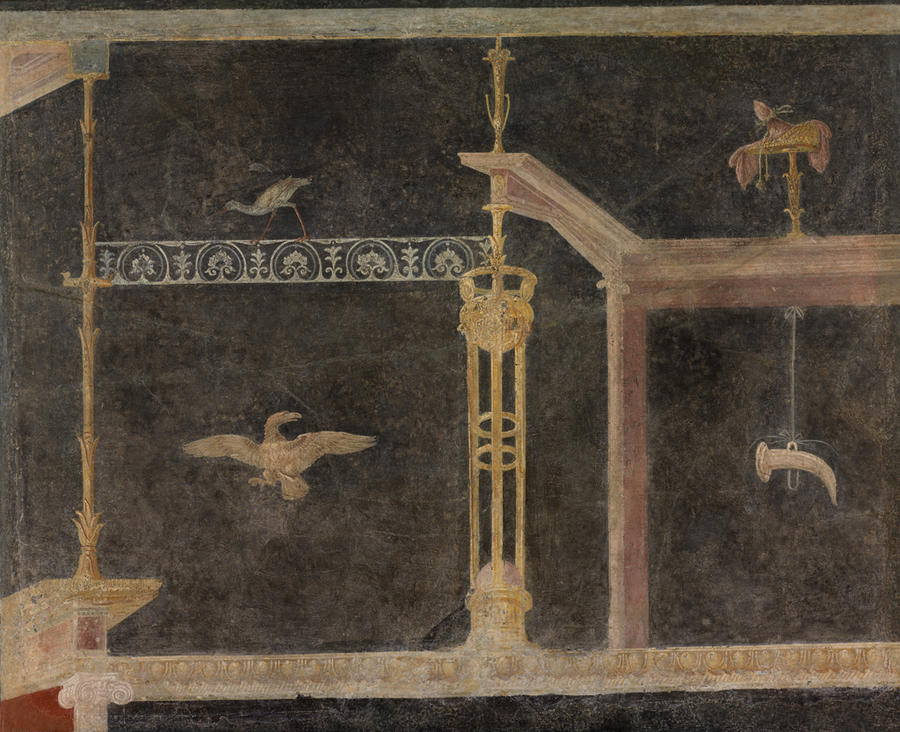
Fragment of a black wall, 14-37 CE (source)
SCULPTURE
Traditional Roman sculpture is divided into five categories: portraiture, historical relief, funerary reliefs, sarcophagi (coffin), and copies of ancient Greek works. Contrary to the belief of early archaeologists, many of these sculptures were painted in multiple colours (polychrome) with the painted surface having been worn away with time.
Portrait busts, and portraiture is arguably the main strength of Roman sculpture. The tradition of portrait sculpture back to the earliest days of Roman history. When a Roman man died, his family created a wax sculpture of his face, kept in a shrine at home. These sculptures became records of a person’s existence with emphasis placed on realistic detail over artistic beauty. As Rome grew in wealth and gained access to Greek sculptors, portraits were created in stone over wax.
Copies and adaptations of famous Greek sculptures were also numerous in houses, temples, baths, and theatres, and they were designed to provide a frisson of culture to what were brash and sometimes vulgar displays of power and wealth.
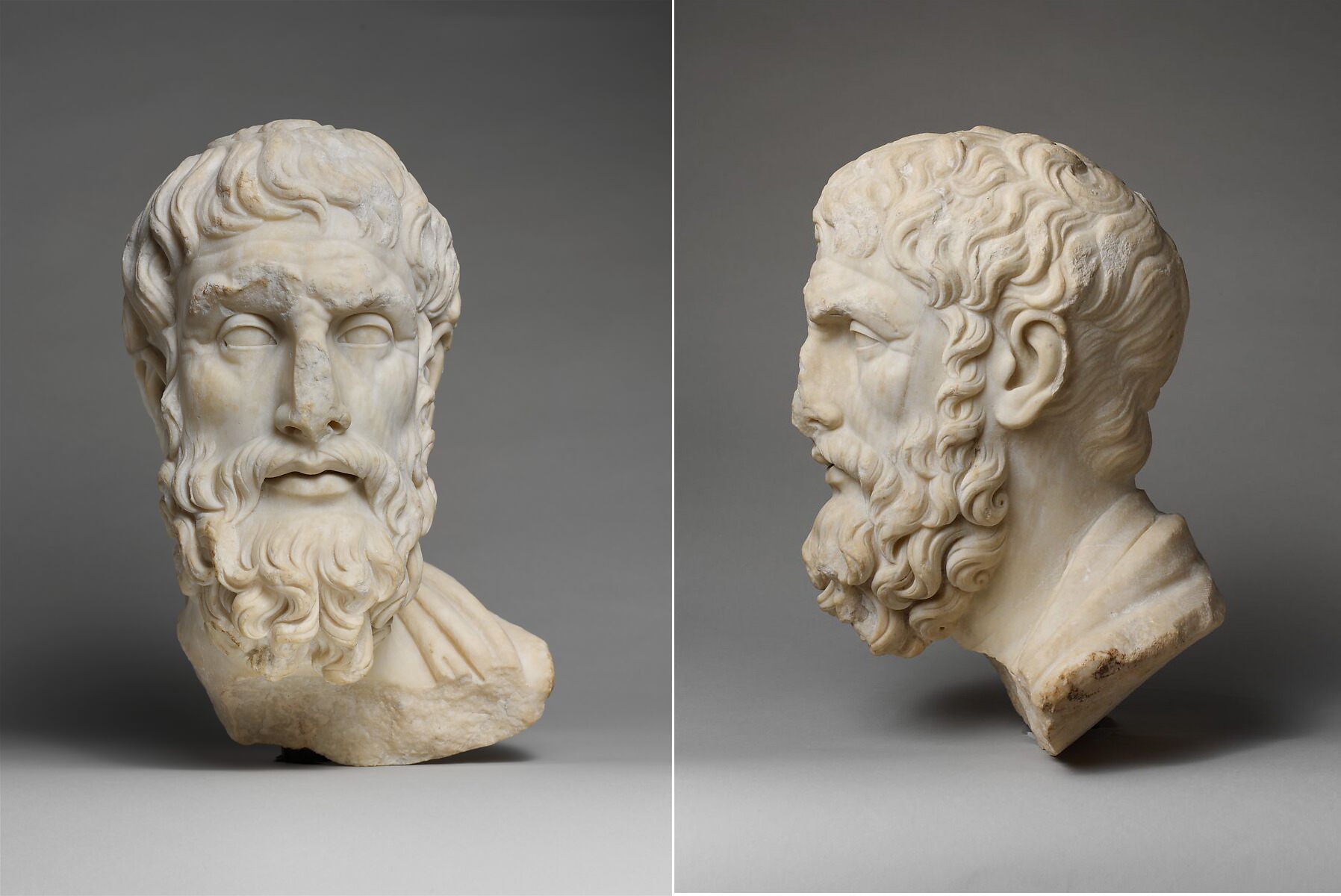
Marble head of Epikouros 2nd century CE (source)
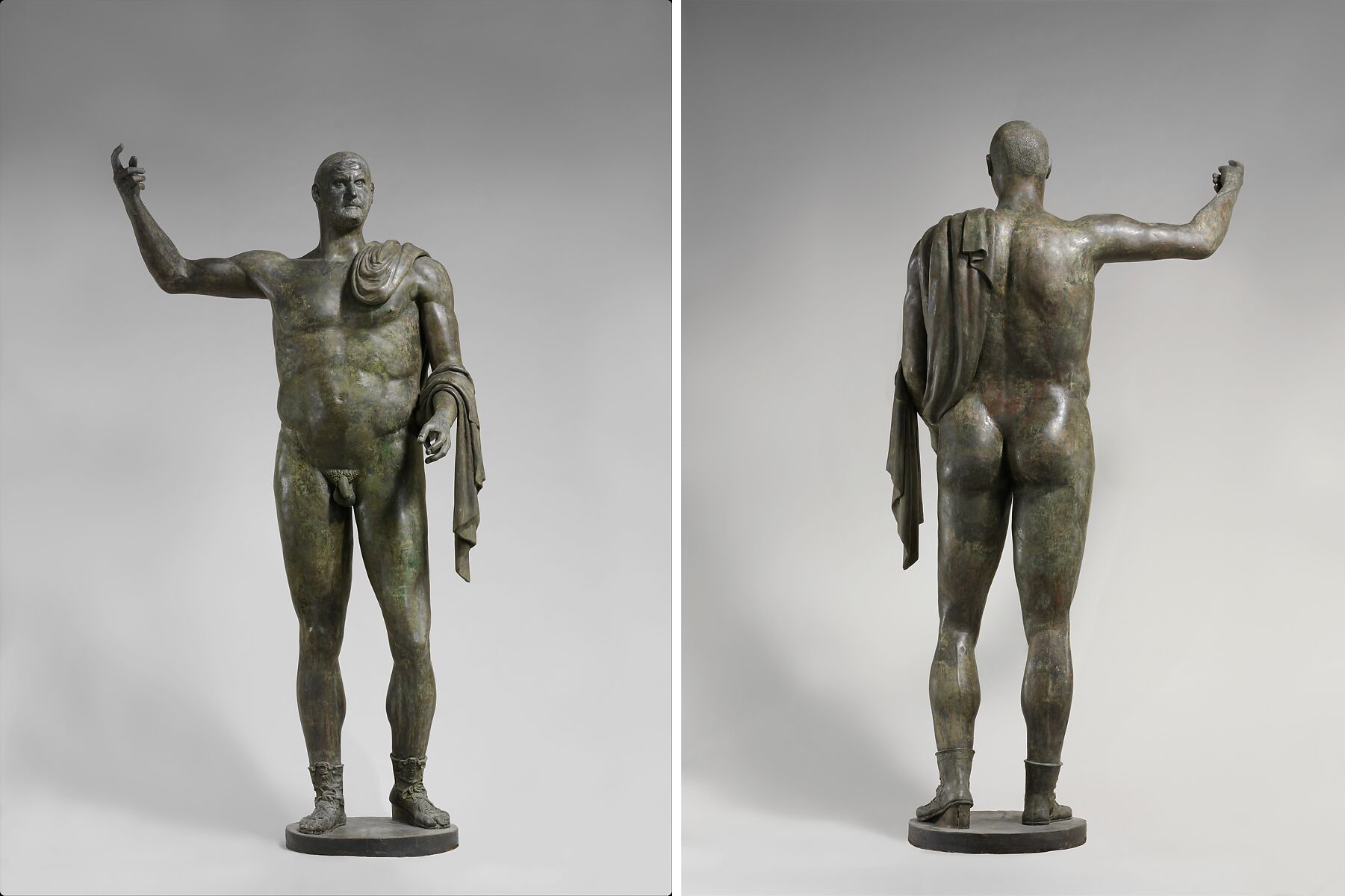
Bronze statue of the emperor Trebonianus Gallus 251–253 CE (source)
WHAT MADE ANCIENT ROMAN ART UNIQUE?
While the traditional view of the ancient Roman artists is that they often borrowed from, and copied Greek precedents (much of the Greek sculptures known today are in the form of Roman marble copies), more recent analysis has indicated that Roman art is a highly creative pastiche relying heavily on Greek models but also encompassing Etruscan, native Italic, and even Egyptian visual culture. Roman artistic innovations included equestrian statues, naturalistic busts, and realism advances in landscape painting.
After the Middle Ages, the artists of the Renaissance studied the sculptures, architecture, and art of Ancient Rome and Greece to inspire them. The classic art of the Romans had a significant influence on art for many years.
(source 1/2/3)
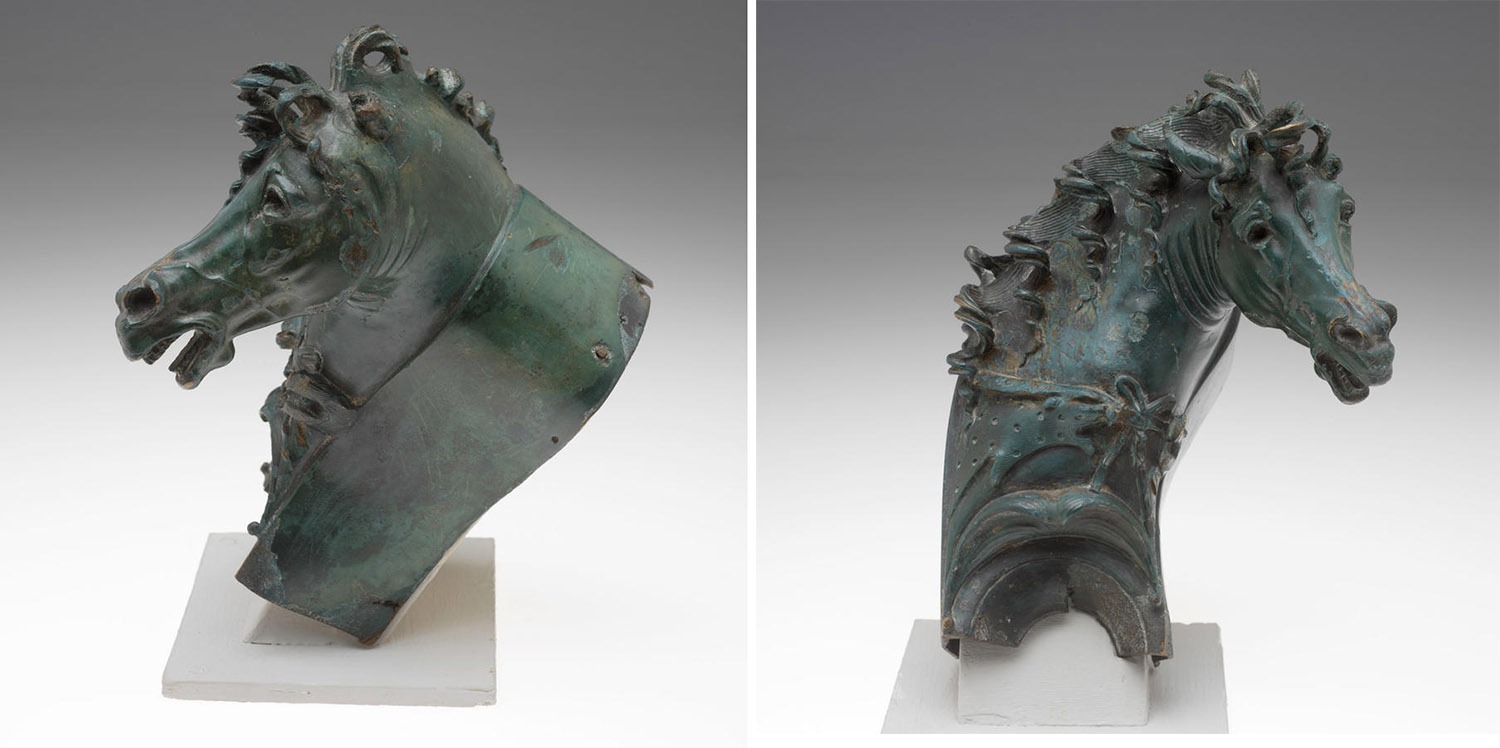
Roman couch decoration in the form of a horse’s head, 100s CE (source)
REPUBLIC
In the Republican period, art was produced in the service of the state, depicting public sacrifices or celebrating victorious military campaigns. Portraiture extolled the communal goals of the Republic; hard work, age, wisdom, and being a community leader and soldier. Patrons chose to have themselves represented with balding heads, large noses, and extra wrinkles, demonstrating that they had spent their lives working for the Republic as model citizens. We now call this portrait style veristic, referring to the hyper-naturalistic features that emphasize every flaw to capture personality. (source)
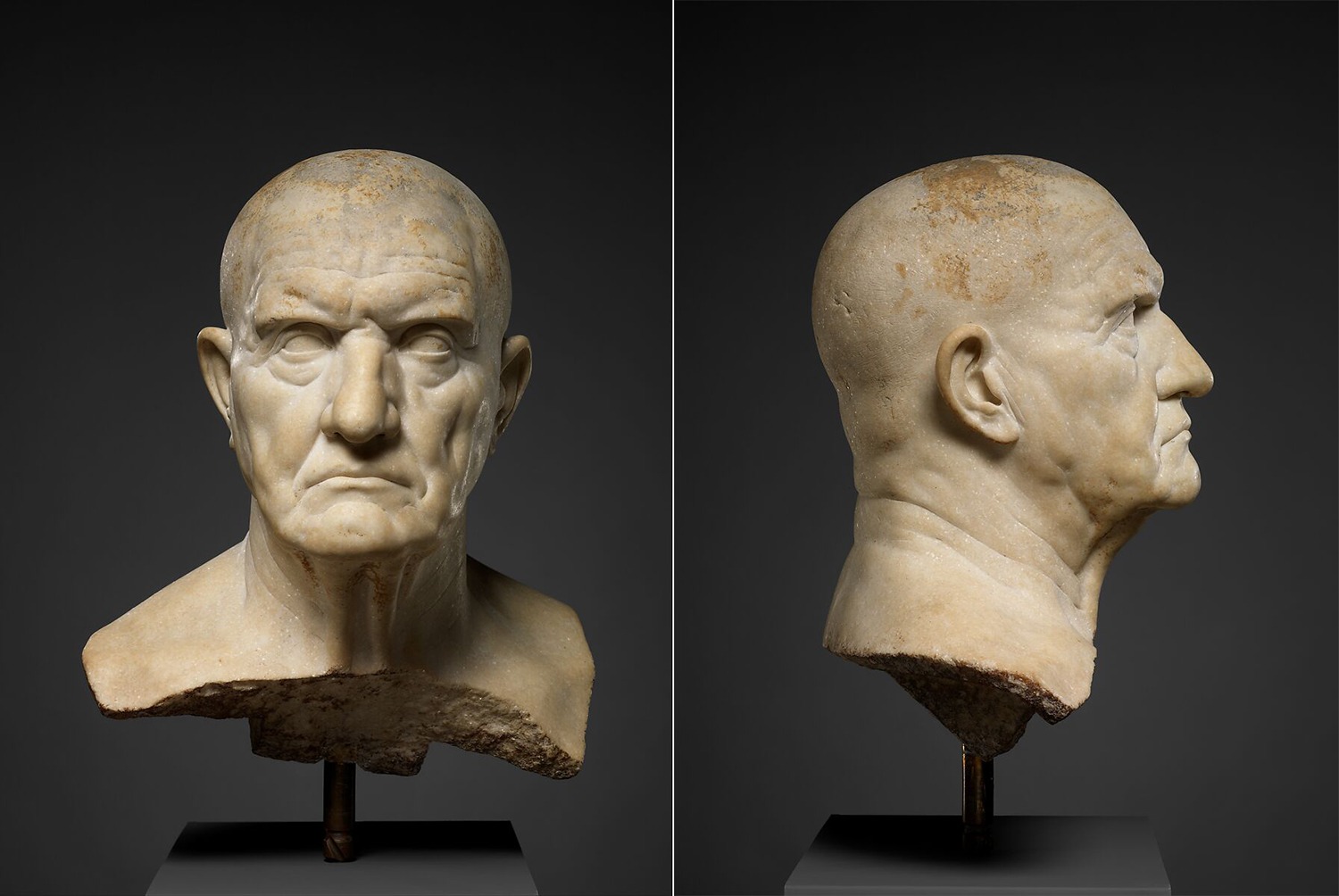
Marble bust of a man mid-1st century CE (source)
EMPIRE
The art of this period often hearkened back to the Classical art of the past. Classical, when used in reference to Roman art, refers broadly to the influences of Greek art from the Classical and Hellenistic periods (480-31 B.C.E.). Elements include smooth lines, elegant drapery, idealized nude bodies, highly naturalistic forms, and balanced proportions that the Greeks had perfected over centuries of practice. Subject matter within Ancient Roman art became more diverse, depicting not only natural scenes of the landscapes, but also mythological themes and figures, as well as the inclusion of still life. (source 1/2)
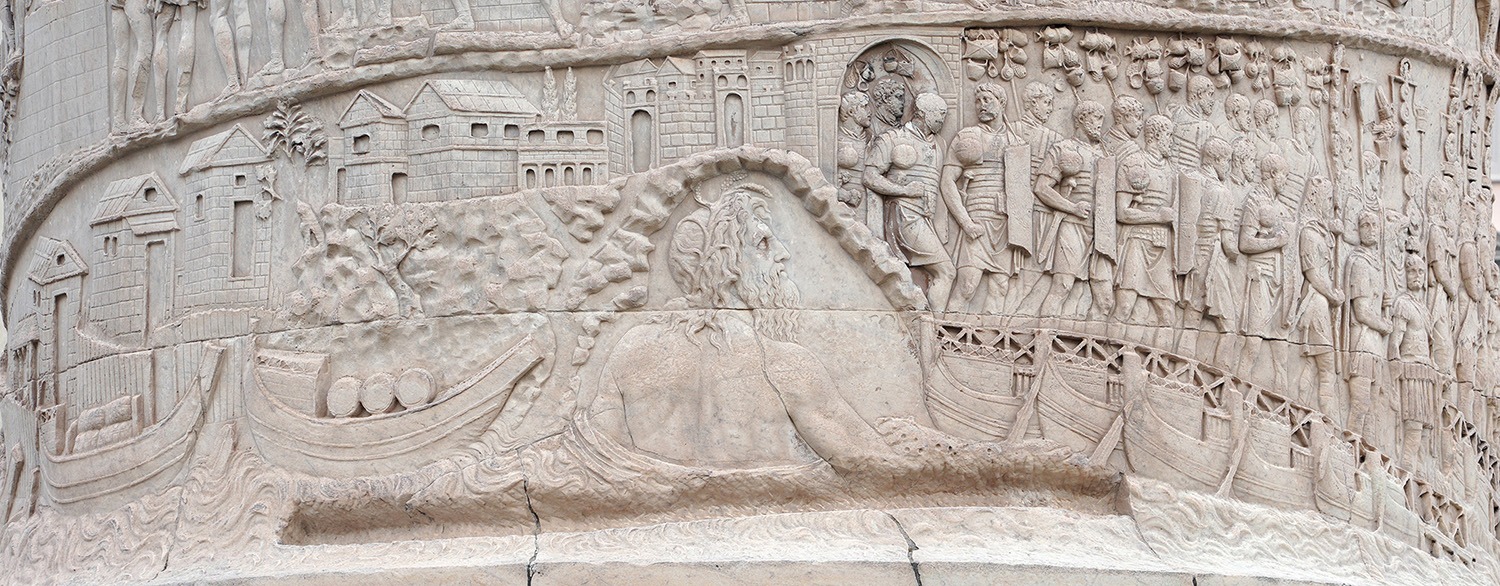
The crossing of the Roman Army over the Danube River in the first Dacian War, Column of Trajan (detail), 113 C.E., Rome (source)
LATE EMPIRE
Later Imperial art moved away from earlier Classical influences. Characteristics of the Late Empire period include sculpture frontality, simple compositions, stiffness of pose and drapery, deeply drilled lines, less naturalism, squat proportions, and lack of individualism. These characteristics emphasised power at the expense of grace with important figures often slightly larger or placed above the rest of the crowd to denote importance.
During the 3rd century and later, Christianity was sweeping through Roman society and Roman arts began reflecting Christian themes. This focus on divine mythology was accompanied by a gradual shift to more stylised art which would characterised later medieval art. Wall painting, mosaic work, and funerary sculpture thrived, while full-sized sculpture, portrait and panel painting died out, most likely for religious reasons.
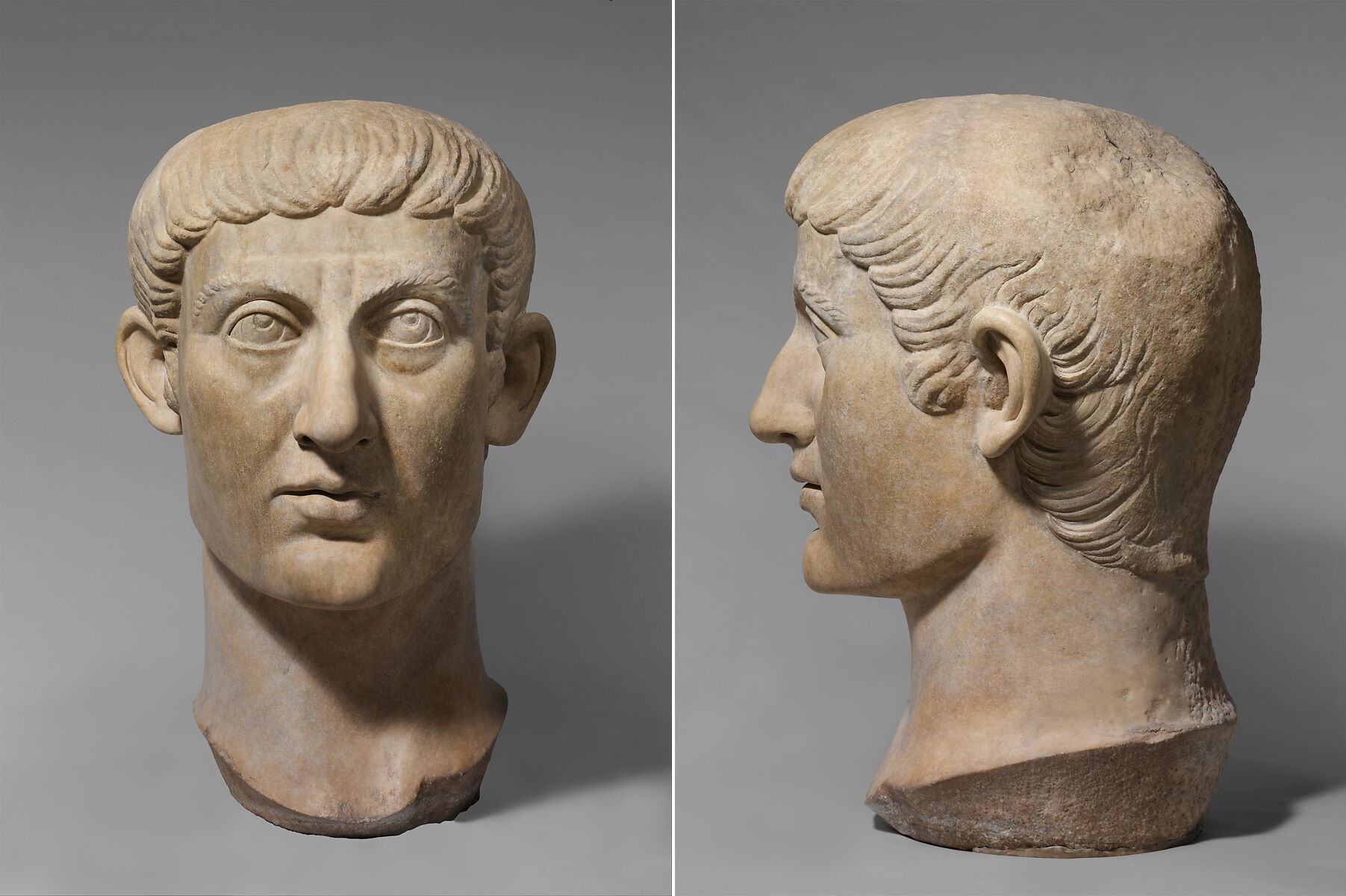
Marble portrait head of the Emperor Constantine I ca. 325–370 CE (source)
By the 2nd century BC, most of the sculptors working in Rome were Greek (often enslaved in conquests) whose names are very rarely recorded. Where Greek artists were highly revered in their society, most Roman artists were anonymous and considered tradesmen. Unlike Ancient Greece, there’s no recording, of the great masters of Roman art, and practically no signed works. Where Greeks worshipped the aesthetic qualities of great art, and wrote extensively on artistic theory, Roman art was more decorative and indicative of status and wealth, not the subject of scholars or philosophers. (source)
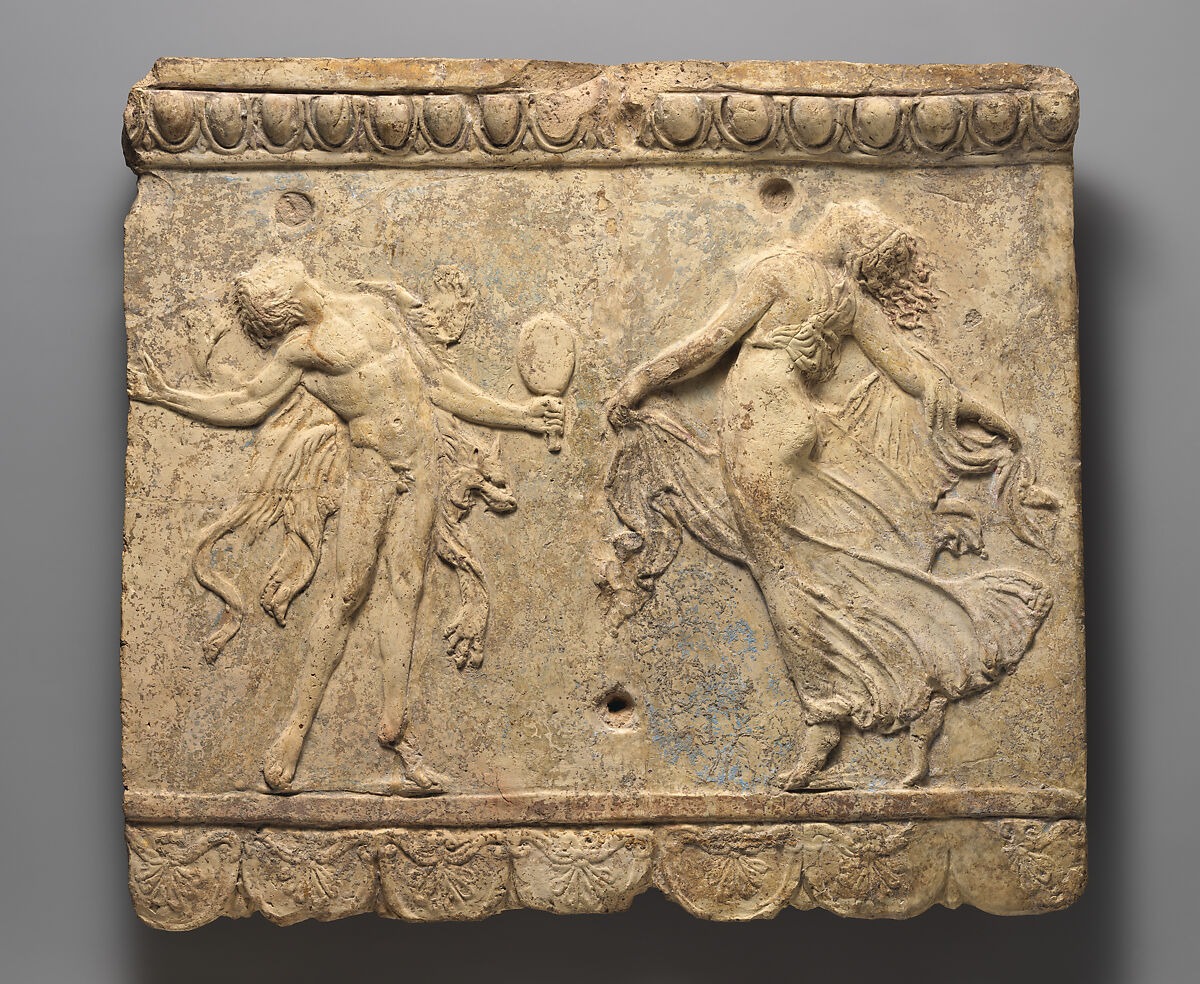
Terracotta plaque 27 BCE–68 CE (source)
Despite not many Roman paintings having survived, a group of naturalistic portraits produced in Roman-ruled Egypt for use in mummification, give us insight into the how. Such portraits were placed over the deceased’s face and secured with linen wrappings. The portraits were typically painted on thin wooden boards using pigments mixed with beeswax. You can see a diverse range of painting styles within this genre, over on the wikiart page HERE!
Some of the best evidence for the techniques of Roman wall painting is in Pliny’s Natural History and in Vitruvius’ manual De Architectura. Vitruvius describes the elaborate methods employed by wall painters, including the insertion of sheets of lead in the wall to prevent the capillary action of moisture from attacking the fresco, the preparation of as many as seven layers of plaster on the wall, and the use of marble powder in the top layers to produce a mirror-like sheen on the surface.
Preliminary drawings or light incisions on the prepared surface guided the artists in decorating the walls a fresco (on fresh plaster) with bold primary colors. Softer, pastel colors were often added a secco (on dry plaster) in a subsequent phase.
Vitruvius also informs us about the pigments used by the Roman artist. Black was drawn from the carbon created by burning brushwood or pine chips. Ocher was extracted from mines and served for yellow. Red was derived either from cinnabar, red ochre, or from heating white lead. Blue was made by mixing sand and copper, and then baking the mixture. The deepest shade of purple was by far the most precious color, as it was usually obtained from sea whelks.
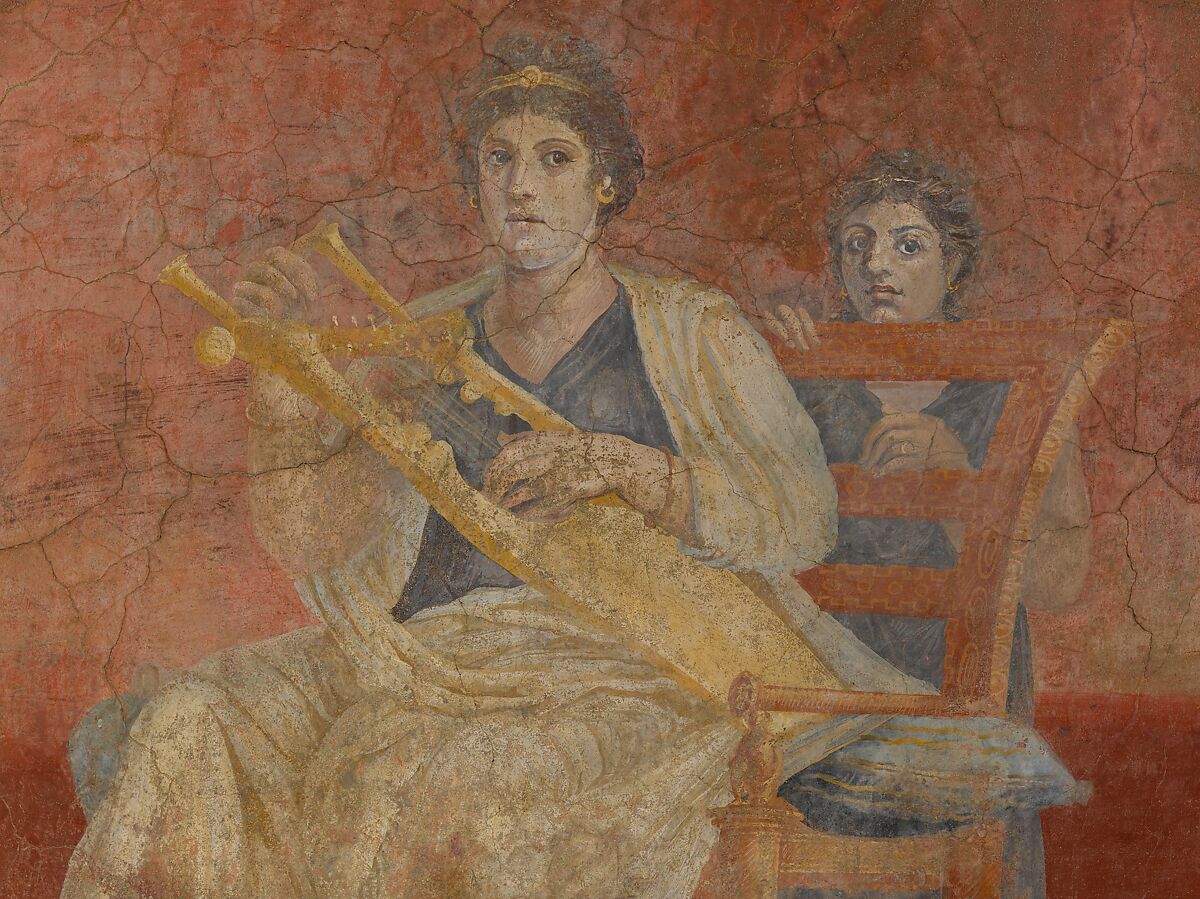
Wall painting from Room H of the Villa of P. Fannius Synistor at Boscoreale
ca. 50–40 BCE (source)
Owing in part to the fact that the Roman cities were far larger than the Greek city-states in power and population, and generally less provincial, art in Ancient Rome took on a wider, and sometimes more utilitarian, purpose. Roman culture assimilated many cultures and was for the most part tolerant of the ways of conquered peoples. Roman art was commissioned, displayed, and owned in far greater quantities, and adapted to more uses than in Greek times. Wealthy Romans were more materialistic; they decorated their walls with art, their home with decorative objects, and themselves with fine jewelry.
Roman art encompasses private art made for Roman homes as well as art in the public sphere. The elite Roman home provided an opportunity for the owner to display his wealth, taste, and education to his visitors, dependents, and clients.
The public sphere is filled with works commissioned by the emperors such as portraits of the imperial family or bathhouses decorated with copies of important Classical statues. There are also commemorative works like the triumphal arches and columns that served a didactic as well as a celebratory function.
When Romans died, they left behind imagery that identified them as individuals. Funerary imagery often emphasized unique physical traits or trade, partners, or favoured deities. Roman funerary art spans several media and all periods and regions. It included portrait busts, wall reliefs set into working-class group tombs, elite decorated tombs, and the painted portraits placed on mummies and sarcophagi. Because death touched all levels of society—men and women, emperors, elites, and freedmen—funerary art recorded the diverse experiences of the various peoples who lived in the Roman Empire
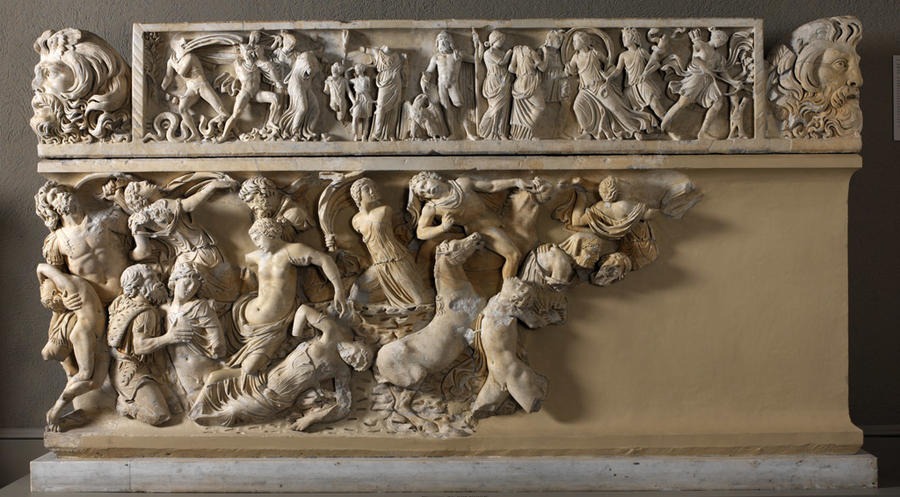
Roman fragmentary sarcophagus front and lid depicting The Slaughter of the Niobids, end of the 2nd century CE (source)
I hope you’ve enjoyed this journey into Ancient Roman Art!
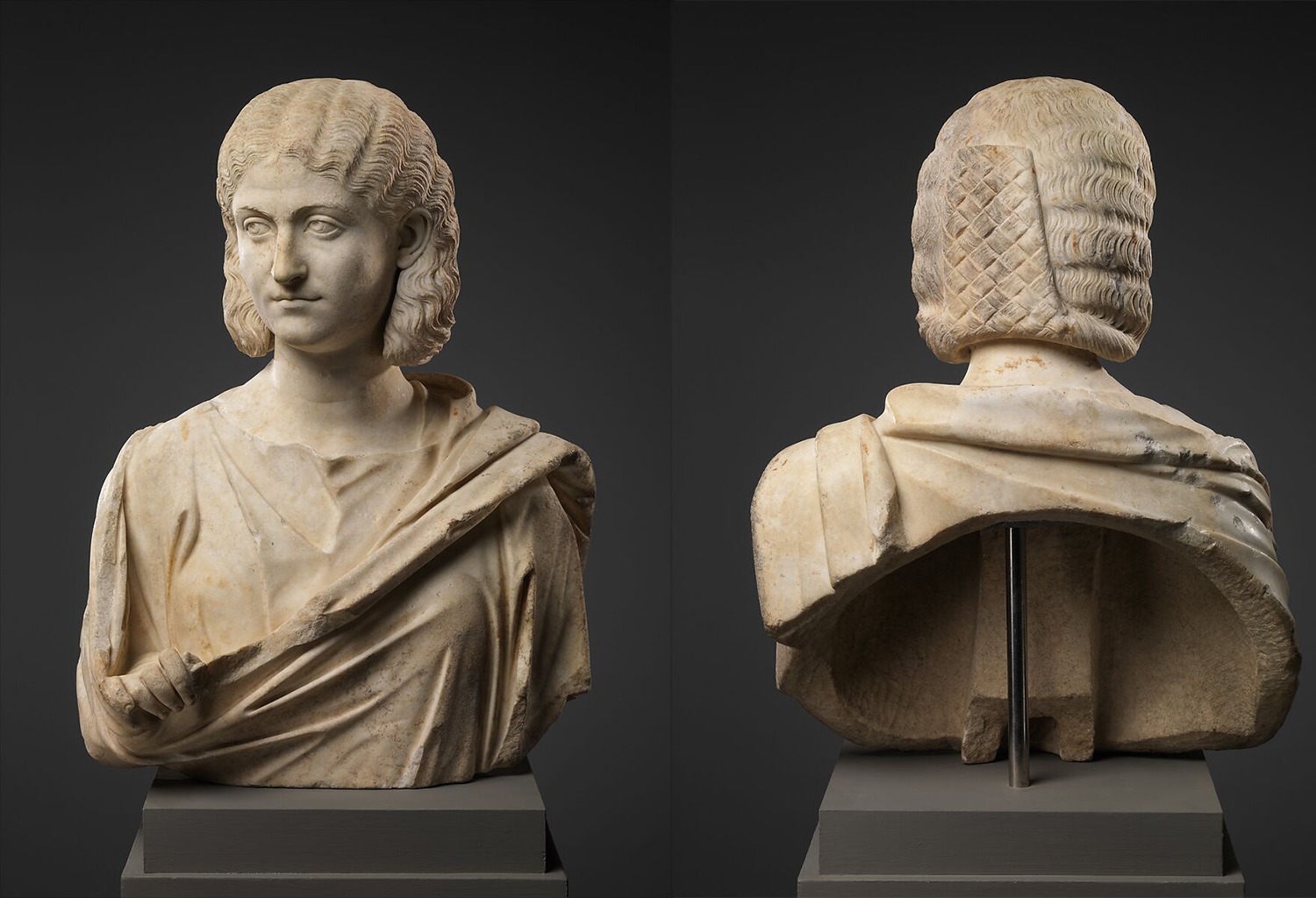
Marble bust of a woman, mid–3rd century CE (source)
–
Want to see what else I do? Come peek over on my insta or grab a freebie when you sign up to my newsletter below 🙂 🙂

